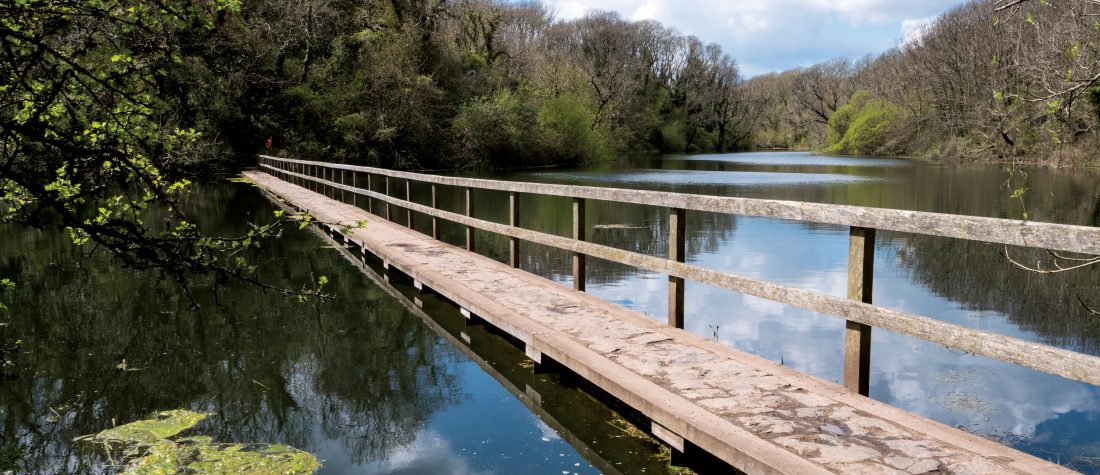Ever since 2011, I’ve been following the catastrophic dumbing-down process of the National Trust. This summer, the Trust hit two new lows.
First came the Trust’s proposals for ‘Curation and Experience’, as part of its ‘reset programme’ to deal with the £200m loss of income resulting from Covid-19. The Trust proposes to get rid of all the lead curators in the regions and many junior curators. Instantly, brilliant scholars of architecture, archaeology, historic gardens, paintings, sculpture, furniture, textiles, silver and libraries would be sacked.
Then, in a report called “Towards a 10-year vision for places and experiences. Version 2.1”, Tony Berry, the Trust’s Director of Visitor Experience, put forward his terrifying ideas for the future. He wants to “dial down” the Trust’s role as a big cultural institution and to move away from looking after English country houses. He also said the Trust intends to put its collections in storage and hold fewer exhibitions at its properties to prioritise its role as the “gateway to the outdoors”.
Sign of the times
I first noticed something was going wrong with the National Trust almost a decade ago in Pembrokeshire. It was at the lake by Broadhaven Beach, owned by the Trust.
I’ve been going there for over 30 years, ever since I was a boy. The landscape has remained unchanged ever since, 200 years ago, Lord Cawdor of Stackpole Court dammed a stream leading down to the sea, forming a series of lakes and lily ponds.
And then, suddenly, pointlessly, the Trust erected a bright purple sign by one of the lakes, saying:
“Return to the start,
a new path you’ll take
Its rocky in places,
don’t fall in the lake.”
I didn’t realise it then but, in that sign, I’d happened upon a symptom of the main disaster to befall the Trust in the last ten years – an obsession with interpretation, telling a story and bombarding visitors with messages telling you what to think. And the people writing them, as in that notice by the lake, are semi-literate, too.
Those messages – once unobtrusive, in the form of small captions to pictures, rooms and furniture, or small stones marking place names in the landscape – are now enormous. Those captions were brief and historical, with dates, artists, architects and explanation of style. The new, enormous messages run scared of facts and are all about history-free feelings. They have got much bigger and say much less.
Practically everywhere – a few properties hold out against the rot – there has been a steep decline in standards: badly spelt notices, a dumbed-down dislike of knowledge, everything written as if for children.
Blot on the landscape
Take Osterley Park on the western fringes of London – a rare survival in the middle of urban Hounslow. A Robert Adam house, with splendid Adam interiors, it’s still surrounded by its Elizabethan stables, an 18th-century landscape and classical follies.
I have been going to Osterley for 20 years. Over the last decade, this untouched Georgian gem has been increasingly despoiled and dumbed down by the National Trust.
The Trust spent £356,000 to turn this Elysian landscape into a child-friendly leisure centre. As one huge Trust poster, strapped to the railings of the park, said, the money will pay for “A new skills area for young families providing kids with a safe place to learn to cycle and gain confidence”.
I’m all for children visiting National Trust properties, and I’m all for bicycling around them. But why splurge this vast amount of money on something you could already do on the paths at Osterley? And why use pointless language like “skills area” and “safe place”, instead of just saying “a place where you can learn how to ride a bike”? It’s all part of this destructive addiction to interpretation.
Then there’s the allied addiction to story-telling that kills the places they’re telling the stories about. At Prior Park, Bath, one of the greatest mid-18th century landscapes in the country, the grotto has been ruined by a vast virtual-reality video screen, with a cartoon showing a Disneyfied vision of Prior Park.
No facts are allowed to intervene in National Trust Kiddy World. Instead, the noticeboard outside the grotto asks you to “Think about how each area of the garden makes you feel”.
Huge posters are everywhere, destroying the view, disturbing your thoughts and removing you from the sublime, original beauty of these houses and landscapes. The imagination is squashed as you are told what to think. And yet, you’re barely told any facts so there’s no room to develop the pleasure that comes from hard-won knowledge.
At Osterley, the park fence was hung with an inflated dog-walking sign when I visited. At Wimpole, they were advertising a fun run. Fine to have dogs in these places; fine to run in them. But why advertise them so prominently, when most dog-walkers and runners will know about these things anyway?
It’s all an extension of another National Trust addiction – to signage.
Try walking round the garden at Kingston Lacy in Dorset and you can’t move for blackboards, propped against the trees, saying: “Snowdrop lovers are also known as galanthophiles.”
Mixed messages
Inside the houses it’s worse, as house managers frantically try to give the place a sense of living history.
At Wimpole Hall, Cambridgeshire, the table is set for tea at lunchtime, with a plastic fruitcake, and a copy of the Daily Telegraph from 3 June 1953, the day after the Queen’s coronation. In a nearby chair, there’s a copy of Country Life, from 26 February 1976, showing a snowy lakeside scene. So where are we supposed to be? 18th-century Wimpole Hall, summer 1953 or winter 1976? We’re never told.
These weird, empty charades look like upper-class murder scenes, as if the Earl of Hardwicke has just been whipped away from the tea table as he’s about to have a slice of cake and has been garrotted somewhere in the servants’ quarters – or “the Servant’s rooms” – as they are called in the illiterate signs at Osterley.
The desire for fact-free interpretation is so great that the National Trust has even taken to writing rubbish on doors and blinds. At Standen, in West Sussex, the butler’s pantry door is painted with the banal words: “After breakfast at eight, I would go into the pantry and make sure that the silver was polished according to what they wanted that day.”
At Hughenden Manor, Disraeli’s old house in Buckinghamshire, the blinds in the library are printed with a Disraeli quote: “I will sit down now, but the time will come when you will hear me.” It’s from his maiden speech in the Commons in 1837 – not that you’re told that on the blind.
The fear of facts is so great that the guide to the library reads: “Disraeli loved books and the library was the place where he relaxed and conducted his business affairs.” A library for a man who loves books? I’d never have guessed.
This came from one of the new, woeful laminated guides to National Trust houses – illiterate and light on facts, just as new guidebooks have cut back on information about works of art. They’re also full of typos, like this description of Disraeli’s introduction to “high soceity”. Upstairs, the crass understanding of Disraeli’s extraordinary life is reduced to something called the Elevation Room where we’re told “Disraeli was very proud of his social climb”.
The Trust so mistrusts expertise and knowledge that it now doesn’t have enough of either to make major architectural decisions.
The worst example of this is at Osterley Park where the trust is rebuilding the 18th-century orangery, introducing boats along the Long Walk and restoring the original furniture to the temple of Pan. But, rather than getting an 18th-century expert to declare that this is a good or indeed a bad idea, it is asking the public whether they should rebuild it.
So you end up in the extraordinary position where the Trust is too anti-knowledge to tell its visitors much about its houses; and then, having starved them of information, it asks them to make vital decisions that should have been made by the intelligent curators, who have deserted the Trust in their droves – and are on the verge of being sacked almost completely.
According to the National Trust Act of 1937, the Trust’s explicit aims were the preservation of buildings of national interest, along with their furniture and pictures, and the preservation of beautiful landscapes. The Trust is betraying that original duty.
Harry Mount is the author of How England Made the English (Penguin)
‘Dialling down’ on collections at the National Trust
By Eleni Vassilika, former curatorial director of the National Trust
There have been tensions for some time within the National Trust (NT) between the populist ambitions of the Visitor Experience department to make visits fun and appealing, and those of curators to research, understand, interpret and publish the complex histories of properties and collections. The curator’s role has extended to moderating the proliferation of unsympathetic banners, signage and even new structures.
An explosive document – nothing less than a revolutionary assault on the NT’s statutory obligations – has emerged and is mortifying art historians, journalists and cultural movers and shakers alike. A version 2.1 of this document written by the NT’s Visitor Experience director in May, suggests that it was drafted early in lockdown when staff, who might were furloughed and voiceless.
Has Covid-19 provided an excuse to reiterate a hackneyed ‘vision’ whose components are long familiar to curators and others? It calls for the NT to ‘dial down’ its role as a major national cultural institution, directing more of its resources to the outdoors with the addition of multi-trails, while transforming its gardens – some of the greatest in the world – into places of relaxation in which an ‘aesthetic free from existing styles and expectations’ would prevail. It proposes that many houses should be ‘re-purposed’ as public spaces for local audiences and that programming and exhibitions should be scaled back. Further recommendations include having fewer collections on view and presenting the houses in a way that makes the visit a ‘fun and useful experience’.
The NT does have a large staff – it has nearly doubled in the last ten years – and faces serious financial challenges, but it also has a statutory duty to preserve and provide access to its collections, especially to those in historic properties now accredited as museums. No mention is made of the obligations to secure, conserve, document, research, publish and properly interpret collections.
Were a similar document produced for any one of our national museums, the public would be aghast. How can the NT consider removing layers of collecting history? How has such a prejudiced and imbalanced document got this far? Is this ‘vision’ a smoking gun and does its existence explain why the cuts fall so heavily on the curatorial staff? And what is the trustees’ position – how will the NT’s members, government, sister organisations, grant givers, donors, legators and volunteers react?
Given that the NT members are voiceless – no AGM is planned, no resolutions, no votes – we can only turn to the press and our MPs. Is it not time for a parliamentary committee or regulatory agency to step in?
Let us hope the NT does not imperil its outstanding international reputation.


